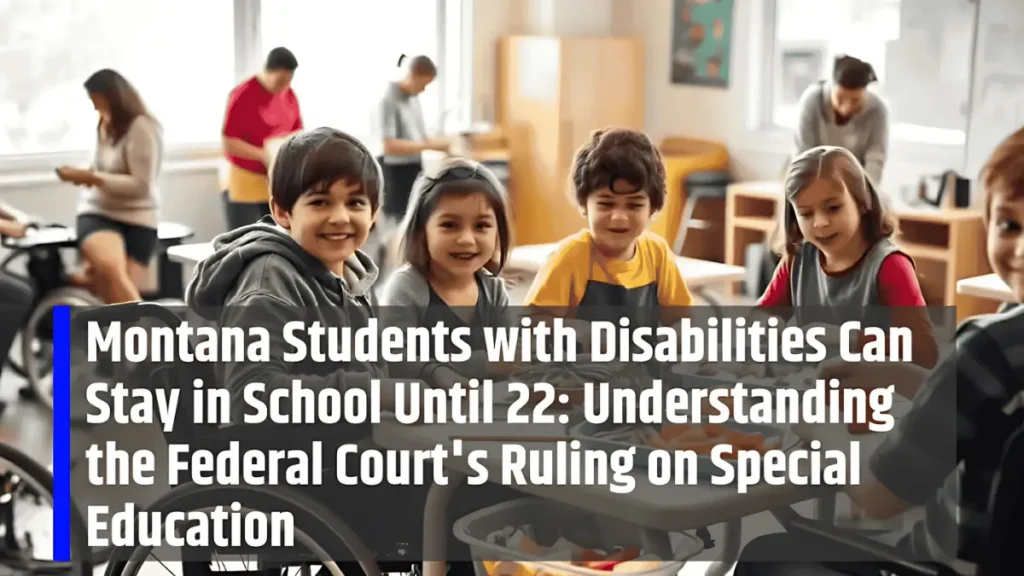A major change is coming for montana students with disabilities in Montana. A recent federal court ruling has clarified that students with special education needs are entitled to continue receiving services until the age of 22. This decision directly impacts families, schools, and educators, ensuring that students do not lose vital learning and support during their transition to adulthood.
What the Court Decided
The court ruling addressed confusion over when special education eligibility ends. Previously, some Montana school districts interpreted the law to mean services should end at age 18 or 19, when most students finish high school. But under the federal Individuals with Disabilities Education Act (IDEA), students with disabilities must have access to education until they reach their 22nd birthday. The court confirmed this standard applies in Montana, just like in other states.
Why It Matters for Families
For families of students with disabilities, this ruling provides additional time for their children to gain critical skills in academics, job readiness, and independent living. Many students with disabilities require extended time to transition successfully into adulthood. Losing services too early can create gaps in learning and limit opportunities. Now, Montana families can count on extended support through age 21, right up until a student turns 22.
Impact on Montana Schools
Montana schools will now need to adjust their programs and budgets to serve eligible students for longer. This may involve expanding transition programs, offering job training opportunities, and ensuring that Individualized Education Programs (IEPs) cover the extended timeframe. While it adds responsibilities for districts, it also aligns Montana with federal law and ensures equal opportunities for all students.
Broader National Context
This ruling in Montana reflects a growing national focus on the rights of students with disabilities. Courts in several states have reinforced that IDEA protections extend until age 22, preventing states from cutting off services too early. For families and advocates, this decision is seen as a victory for equal access to education and long-term support.
Conclusion: The federal court’s ruling guarantees that Montana students with disabilities can stay in school until age 22, ensuring they receive the education, training, and support they need to prepare for adulthood. Families now have greater clarity and security, while schools must adapt to meet these extended needs. This change strengthens educational equity and reinforces federal protections for students across the country.
Disclaimer: This article is for informational purposes only and does not provide legal advice. Families seeking guidance on special education services should consult with their school district or a qualified legal expert.
Read More:
- VA Shrinks Workforce by 30,000: How It Could Impact Veterans and Services in 2025
- Trump Research Grant Freeze Hits Harvard & UCLA: What It Means for U.S. Science
- Declining International Student Enrollment Could Cost the U.S. $7 Billion in 2025
- US Driving License Rule Changes September 2025: What Seniors Aged 70+ Need to Know
- Why International Student Visas Dropped by Over 40%: The Real Impact on U.S. Universities






